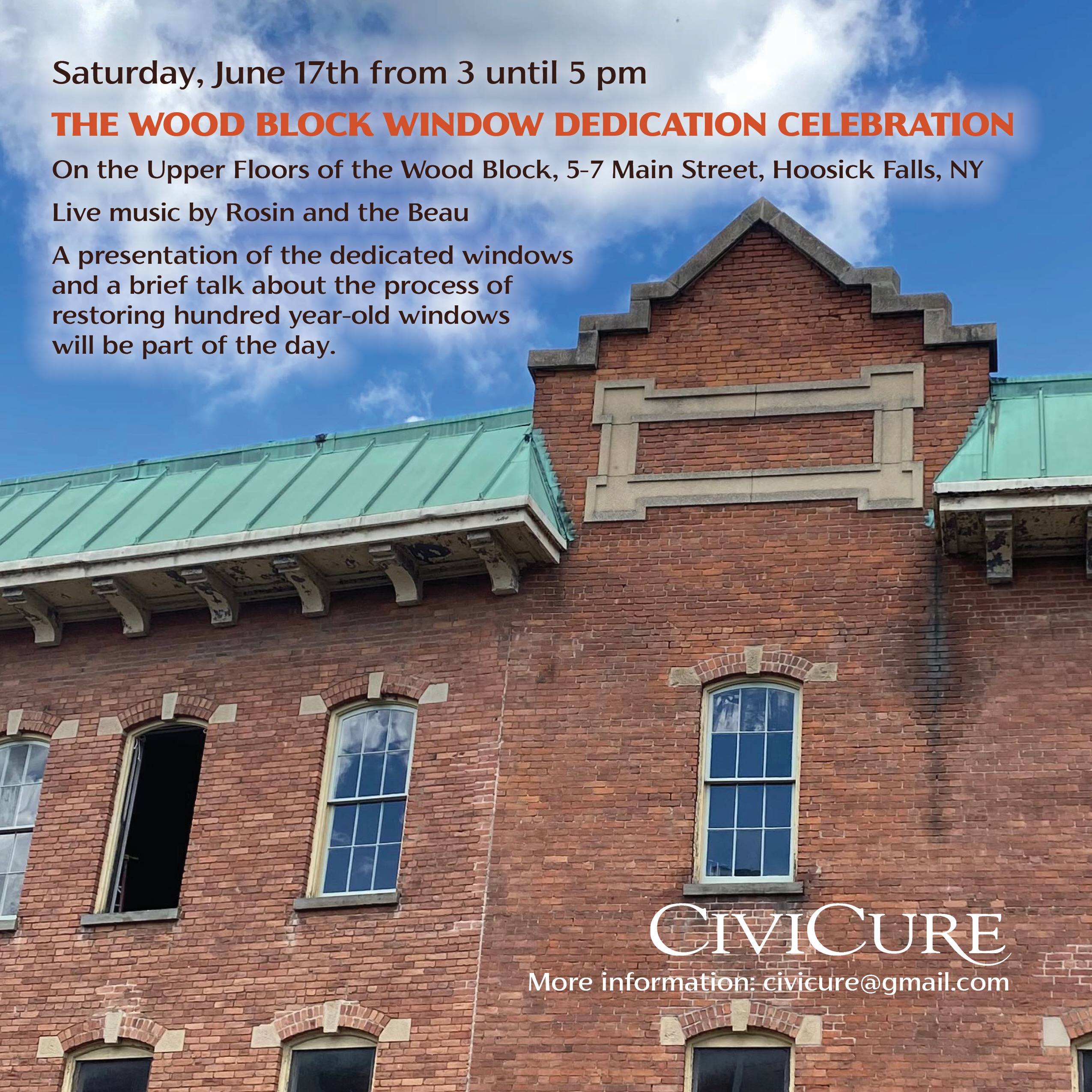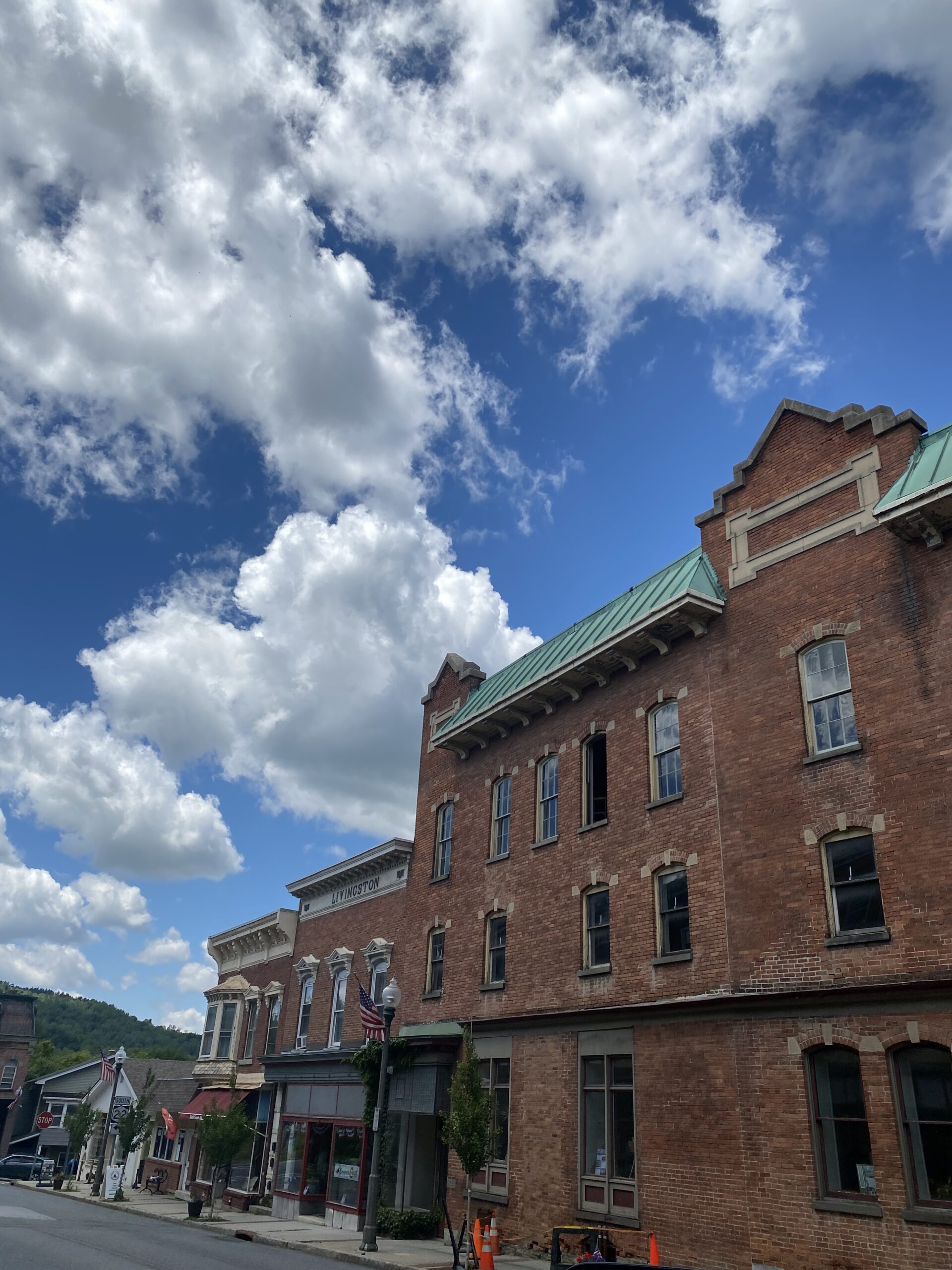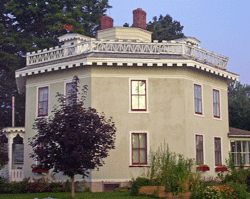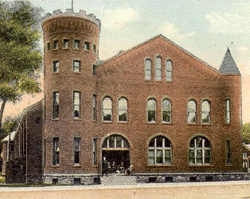Architecture
The Built Environment: Architectural History
The historic sites and buildings of Hoosick make the story of this gem of a country town visible at every turn.
The center of the Village of Hoosick Falls was placed on the National Register of Historic Places to create the Hoosick Falls Historic District in 1980. The district, comprised of approximately forty buildings at the center of the village, reflects the surge of growth in the community during the Industrial Revolution. The greatest engine of that growth was the remarkable rise of the Walter A. Wood Mowing and Reaping Machine Manufactory that grew from the production of 500 machines in 1853 to 66,000 in 1889. With a work force of about 2,000 at its peak, the need for stores and services created a building boom in the Village through the last half of the 19th century. The result was the construction of a large stock of fine Victorian architecture.






L to R Top: Wood Block c. 1878. Wood Block, performance hall. Wood Block c. 2012.
L to R Bottom: Hotel Delaney, built ca. 1850. Estabrook Octagon House. Armory, built in 1889, Isaac Perry, architect.
The majority of these historic district structures are brick or stone with commercial space on the first floor and residential space on the upper levels. The structures represent a range of popular building styles from 1850-1920 including Italianate, Second Empire and Colonial Revival as well as Eastlake or Stick style. Included in the district, at the corner of Main and John Streets is the only surviving structure of Walter A. Wood company. Built in 1878, with Romanesque-revival roof corbels and arched windows trimmed with polychrome brick, it housed offices as well as public spaces on the upper stories, including a Masonic hall and an opera house. The most remarkable of these spaces are the two large, high-ceilinged halls that were used by Walter A. Wood Company workers who formed the Mower and Reaper Band by the 1870s, as well as choral and other musical groups. These spaces also once served the town as a public theater with popular entertainers like Sammy Davis Jr. traveling to perform there well into the 20th century. The spaces have been little altered since their renovation after a fire in 1909. The Art Deco style fluorescent light fixtures in the South Hall date to the 1920s. The Wood Block presently houses professional offices including those of CiviCure.
